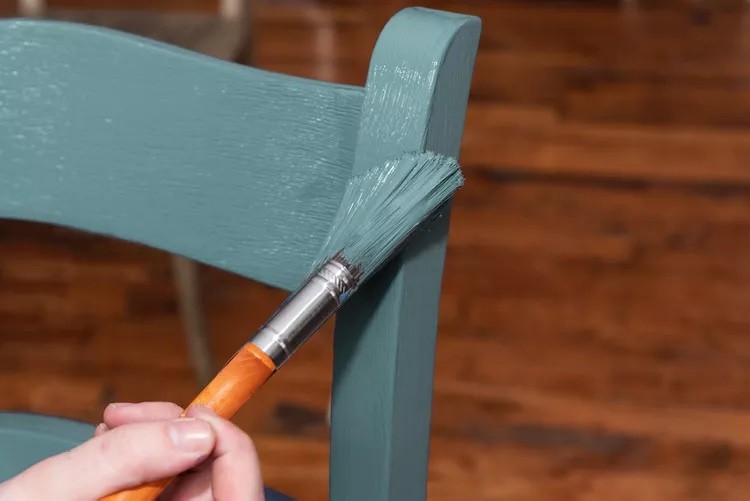Best Paint for Furniture: How to Use Latex Paint to Revamp the Look

A transformative paint touch can breathe new life into your furniture, turning outdated pieces into stunning focal points. However, not all paints are created equal, and choosing the right one for your project is crucial. This comprehensive guide delves into the six best paint types for furniture, exploring their pros, cons, and ideal use cases to ensure your DIY endeavor yields stunning results.
Latex Paint
Pros: Readily available with abundant color options, easy to clean with soap and water, available in different finishes.
Cons: Doesn't stand up to heavy use, not all finishes can be washed, long curing time, prone to chipping and scratching.
Latex paint, a popular choice, offers versatility with various finishes such as flat, satin, semigloss, and gloss. Brands like Benjamin Moore, Sherwin-Williams, Behr, Valspar, and Farrow & Ball provide a spectrum of colors and finishes. This option best suits furniture that won't face heavy daily use, emphasizing affordability.
Chalky Paint
Pros: Adheres well to most surfaces, has a fast drying time, and a smooth finish.
Cons: Brush strokes might be visible, the finish is subject to scratching or marking, and it can be expensive with limited color options.
Chalky paint, favored for its vintage appeal, provides a sanded or distressed look. Brands like Annie Sloan Chalk Paint, Rust-oleum, Joanna Gaines' line with KILZ, and Valspar offer options. It is ideal for refinishing antique pieces or achieving a prosperous, matte look on everyday furniture.
Milk Paint
Pros: Nontoxic powder formula, dries quickly, can be used on most surfaces.
Cons: Tough to achieve consistent saturation, might chip or scratch without sealer; bonder is sometimes required.
Milk paint, with a thinner texture than chalky paint, offers an antiqued, weathered appearance. Brands like Miss Mustard Seed, Real Milk Paint Co., Rust-oleum, and Old Fashioned Milk Paint provide options. Suitable for achieving a distressed look on furniture.
Acrylic Paint
Pros: Easy to apply and self-levels, resilient finish that resists stains, rich color.
Cons: Needs a primer for best results, typically sold in small containers, long curing time.
Acrylic paint, closely related to latex paint, offers a smooth finish with rich pigment. Brands like Amy Howard, Rust-oleum, General Finishes Milk Paint, and Beyond All in One provide options. It is ideal for miniature furniture or accent pieces that require a quick, affordable coat of paint.
Oil Paint
Pros: Durable finish, self-leveling formula, can be used on most surfaces.
Cons: High levels of VOCs, long drying times between coats, not available everywhere.
Oil-based paint, known for its durability, provides a resilient finish suitable for heavily used furniture. Brands like Behr and Valspar offer oil-based paint options. It is best for furniture that requires a durable finish.
Alkyd Paint
Pros: Easy to apply, doesn't show brushstrokes, comes in different sheens, durable and chip-resistant.
Cons: It can take a week to cure fully, requires sanding before application, and can be expensive.
Alkyd paint, a water-based option with an oil finish, offers easy application and a durable finish. Brands like Behr, Benjamin Moore, Dutch Boy, and Valspar provide alkyd paint options. It is ideal for achieving a smooth, chip-resistant finish without needing a top coat.
In conclusion, selecting the right paint for your furniture project is essential for achieving the desired look and durability. Consider the nature of your furniture, the level of use it will endure, and your preferred finish before embarking on your painting journey. Armed with this guide, transform your furniture with confidence and creativity.
Related Article: 2024's Palette Revealed: A Guide to Every Color of the Year and How To Bring Them Into Your Life
From Digital Models to 3D-Printed Homes: Jaspreet Kaur Lall Explains How the Innovation Changes the Construction Industry

Future Belongs to Green Construction: Sampath Kumar Paspunoori Explains One of the Key Trends in the Construction Industry

Kamala Harris' Campaign Ad Uses Iconic Visuals from Carrie Mae Weems to Connect with Voters

Historic Ancient Roman Ruins in Baalbek Remain Strong After Israeli Air Strikes; Locals Seek Cultural Protection

4 Ways to Honor Departed Loved Ones in Your Home Design














